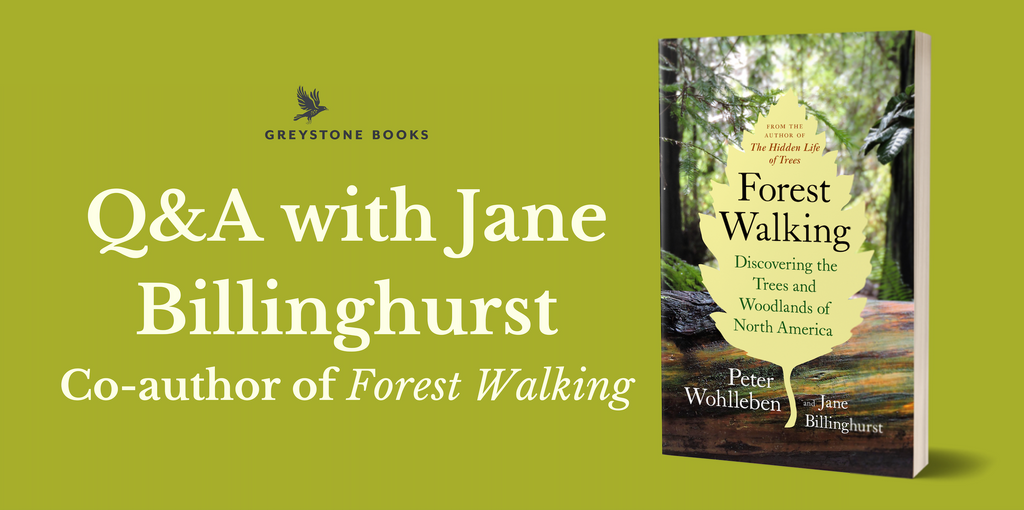Peter Wohlleben’s longtime translator, including of the New York Times bestseller The Hidden Life of Trees, shares what draws her to Peter’s work, tips for making the most of your next walk in the woods, and some of the experiences that inspired Forest Walking.

You’re Peter’s longtime editor and translator, including of the beloved bestseller The Hidden Life of Trees. What draws you to Peter’s work?
Peter gets to the heart of what attracts people to nature, taking you on a journey he is obviously very excited about. He always looks for the positive and lets people know how they can make a difference.
In addition to being a writer yourself, you translate books from German into English. What do you enjoy most about the act of translation?
I find translation to be a stimulating combination of my other two skills: writing and editing. I can immerse myself in someone else’s voice and feel my way forward as to how they would have expressed themselves had they originally written their work in English. As I grew up in the UK and lived in Canada for over 20 years (I now live in the States), I’m used to doing some translation just within the English language on a daily basis!
While researching for this book, you travelled all across North America, visiting diverse forest ecosystems. Can you share a favorite memory from that time? Was there a particular forest that surprised you?
I loved going back to the deciduous forests of the northeastern states (I lived in Connecticut for a while) and imagining how different the landscape must have been when most of the area was clear cut in the nineteenth century. The most surprising forests were the small pockets of trees I am familiar with from the Pacific Northwest that still exist in protected pockets in Big Bend National Park in Texas. Douglas-firs migrated down when ice sheets covered the northern part of the continent and some of them are still there.
Forest Walking is about how to be a forest detective: how to slow down, engage all your senses, and awaken to the ecosystem around you. What advice do you have for people looking to immerse themselves in the forest near them?
Find the pace that suits you best to explore. When I hike fast, I enjoy the exercise but notice very little. When I walk really slowly, I cover very little ground. There’s a medium pace I have found that is slow enough for me to scan my surroundings yet fast enough that I actually get somewhere. Find the ideal pace for your walks and you will get into the routine of scanning the trail for exciting finds that most other people miss.
Throughout the book, you share with Peter illuminating facts about the species in different forests. Could you share a fascinating fact or two with us?
- There are animals, such as some salamanders, that live in the redwoods’ canopy whose feet never touch the ground.
- Birds can see light in the UV range. Small rodents have UV markers in their urine and it is thought these help guide hawks on the lookout for furry snacks.
- Raccoons eat on banana slugs and are wise to the sticky properties of slug slime: they roll their slugs in dirt before popping them in their mouths.
- Skunk cabbages heat the ground as they grow, which is how they can emerge so early in the spring.



